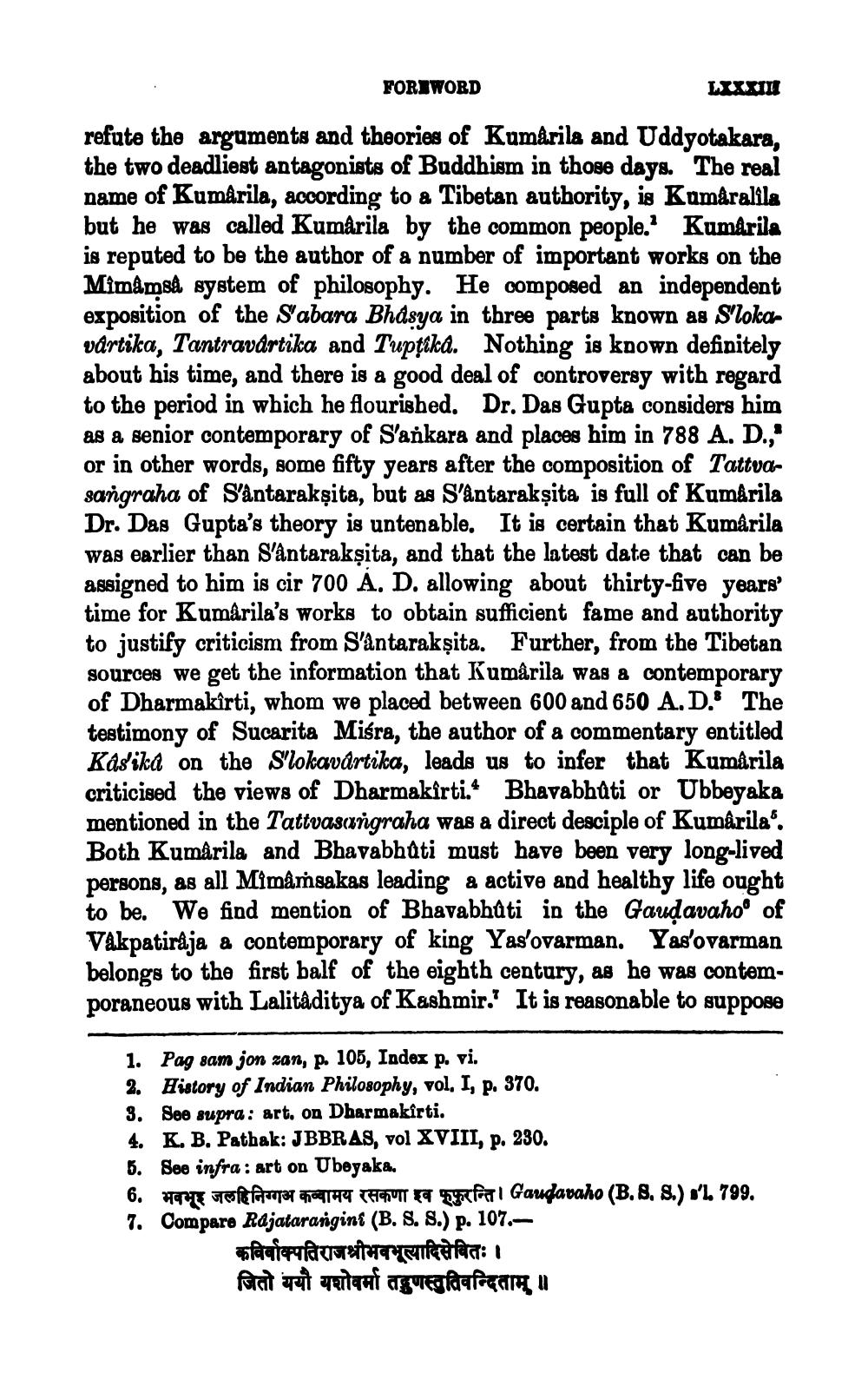________________
FOR WORD
refute the arguments and theories of Kumârila and Uddyotakara, the two deadliest antagonists of Buddhism in those days. The real name of Kumarila, according to a Tibetan authority, is Kamaralila but he was called Kumärila by the common people.? Kumarila is reputed to be the author of a number of important works on the Mimansê system of philosophy. He composed an independent exposition of the Sabara Bhasya in three parts known as Slokavārtika, Tantravārtika and Tupţika. Nothing is known definitely about his time, and there is a good deal of controversy with regard to the period in which he flourished. Dr. Das Gupta considers him as a senior contemporary of Sankara and places him in 788 A. D.," or in other words, some fifty years after the composition of Tattvasangraha of Santarakṣita, but as S'antarakṣita is full of Kumkrila Dr. Das Gupta's theory is untenable. It is certain that Kumârila was earlier than S'ântarakṣita, and that the latest date that can be assigned to him is cir 700 A. D. allowing about thirty-five years' time for Kumarila's works to obtain sufficient fame and authority to justify criticism from Santarakṣita. Further, from the Tibetan sources we get the information that Kumârila was a contemporary of Dharmakîrti, whom we placed between 600 and 650 A.D. The testimony of Sucarita Miśra, the author of a commentary entitled Kasika on the S'lokavārtika, leads us to infer that Kumarila criticised the views of Dharmakirti. Bhavabhati or Ubbeyaka mentioned in the Tattvasangraha was a direct desciple of Kumârila'. Both Kumarila and Bhavabhati must have been very long-lived persons, as all Mimamsakas leading & active and healthy life ought to be. We find mention of Bhavabhati in the Gaudavahoo of Vakpatiraja & contemporary of king Yas'ovarman. Yas'ovarman belongs to the first balf of the eighth century, as he was contemporaneous with Lalitâditya of Kashmir.” It is reasonable to suppose
1. Pag sam jon zan, p. 105, Index p. vi. 2. History of Indian Philosophy, vol. I, p. 370. 3. See supra: art. on Dharmakirti. 4. K. B. Pathak: JBBRAS, vol XVIII, p. 230. 6. See infra: art on Ubeyaka 6. HATE terefarraper 47 744 THAT farl Gardavaho (B. 8. 8.) s'L. 799. 7. Compare Rajatarangini (B. 8. 8.) p. 107.
कविर्वाक्पतिराजश्रीभवभूत्यादिसेवितः । जितो ययौ यशोवर्मा तदुणस्तुतिवन्दिताम् ॥




